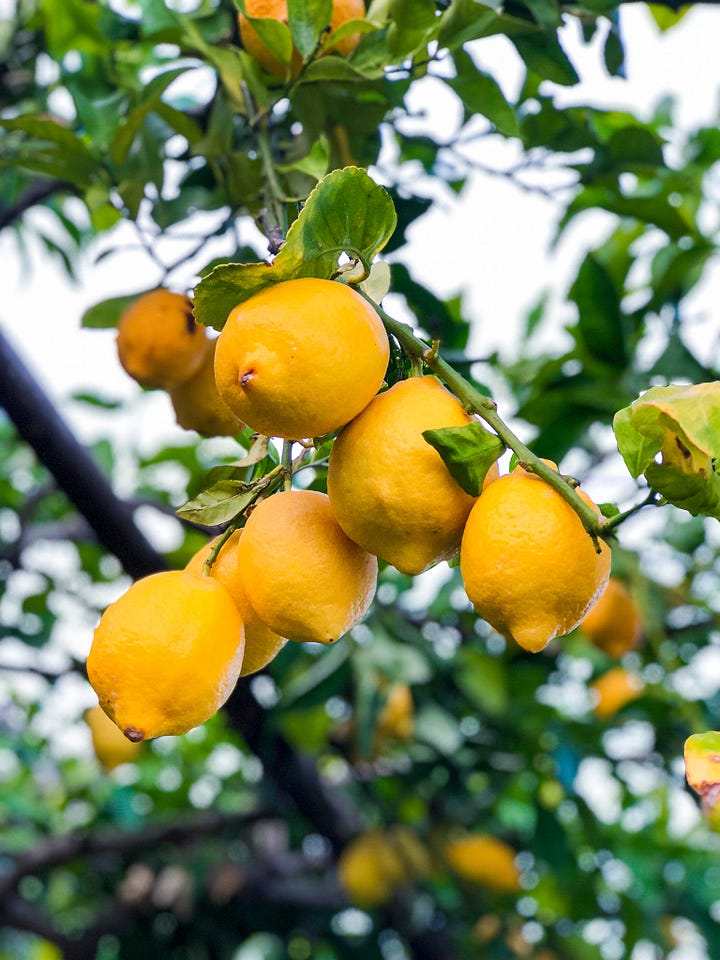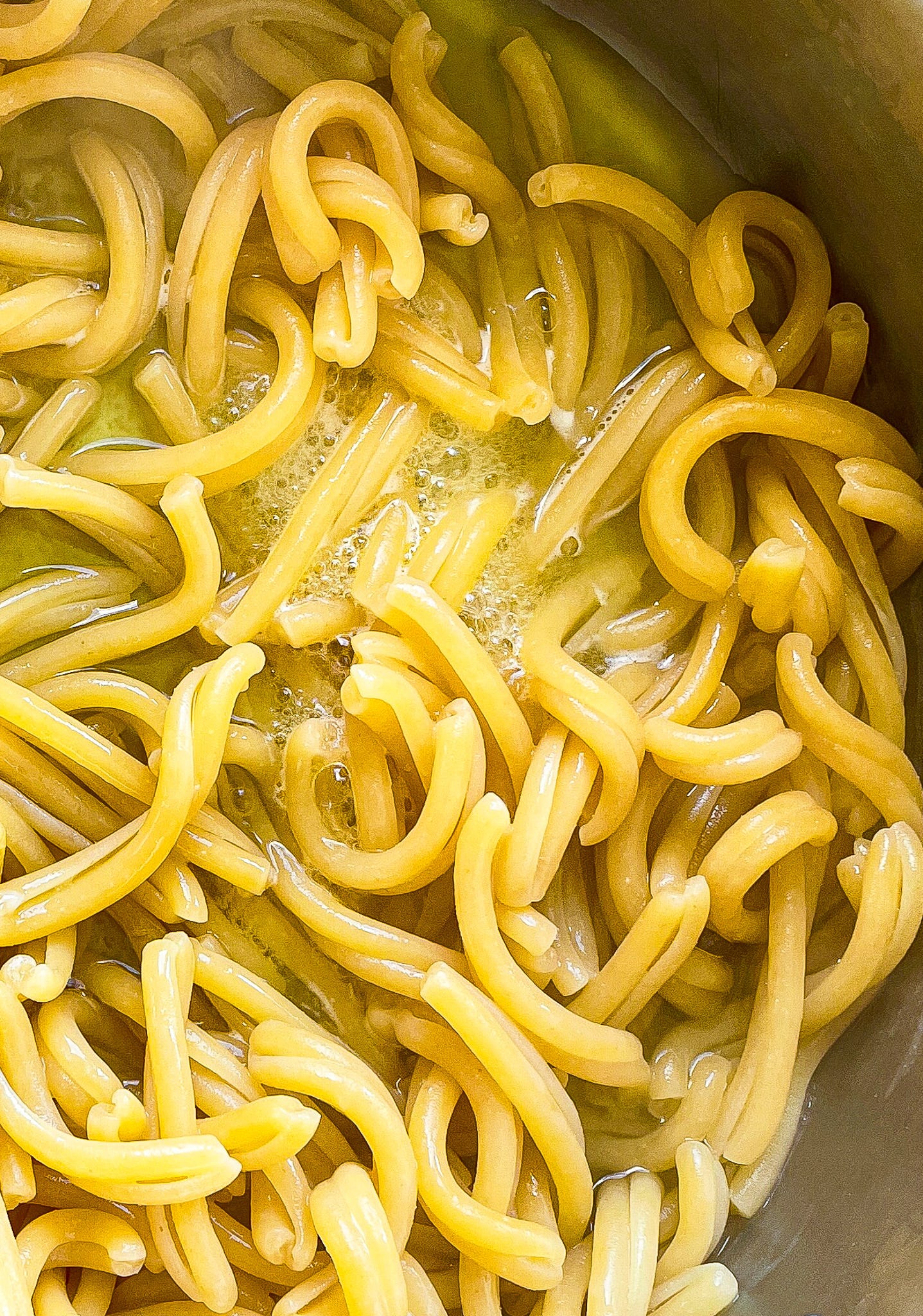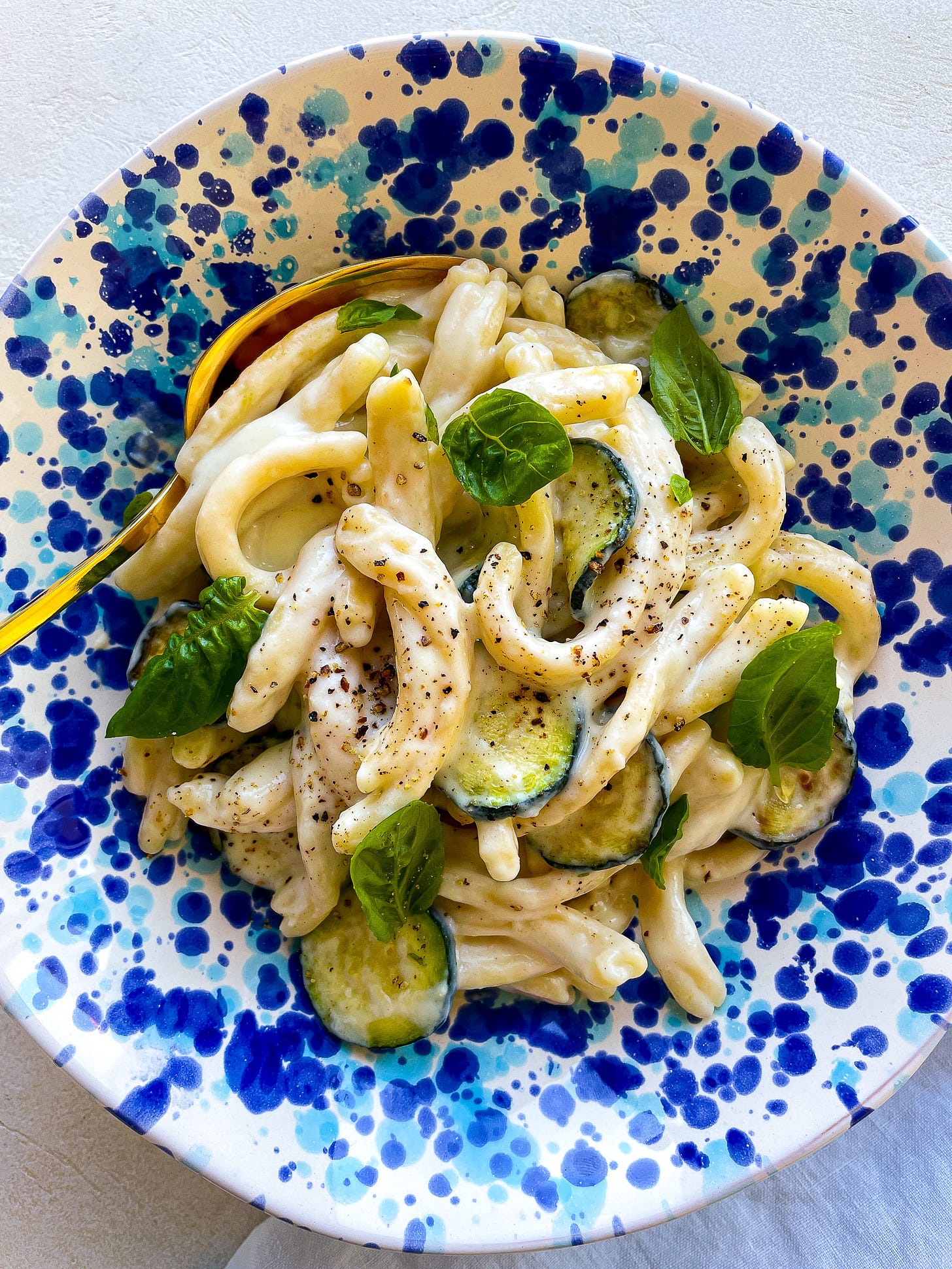A few weeks ago, I came across a dish called spaghettini all’acqua di limone, spaghettini with lemon water, and I couldn’t get it out of my head. It was created, recently, by Neapolitan chef Peppe Guida of the Michelin-starred Antica Osteria Nonna Rosa in Vico Equense, not far from Sorrento. Maybe it’s because summer is within reach, or perhaps because I’m a romantic with a soft spot for the Amalfi Coast, or better yet because one never has enough lemon pastas in their arsenal—likely a combination of the three—but I knew I had to give it a try.
Like all great Italian dishes, spaghettini all’acqua di limone’s allure lies in its simplicity. The ingredient list is short—barely six items—and a celebration of Guida’s local cuisine. Lemons are a main character in the story of the Amalfi Coast, because the lemons you find there—sfusato Amalfitano, for their “spindle”-like shape—are the best. These are hardly the yellow fruit piled high in your local supermarket: A product of long-ago crossbreeding between typical sour lemons, first brought to Italy by Arab merchants, and local bitter oranges, sfusato Amalfitano are larger, sweeter, and intensely aromatic. Their rind, lumpy and thick and imperfect, is a good disguise for the sublime, juicy flesh inside (even the white pith is mild enough to eat). Such a lemon is ideal for all manner of local delicacies like limoncello, of course, but also for snacking, if ever you thought snacking on a lemon was a good idea. (I had a lemon-eating habit when I was two years old. Perhaps it’s time to revive it.) There is nothing quite like strolling the lemon groves of Amalfi, the scent of citrus so pungent you can almost see it—and really, is there any better air to breathe?


Guida is a Michelin-starred chef, so although he uses minimal ingredients, there’s a bit of a technical catch. Unsurprisingly, he uses lemon peels to infuse the pasta’s cooking water, hence the name and what first piqued my interest—easy enough. But he also makes a “lemon leaf flour,” a powder of slowly dehydrated, pulverized, and sieved lemon leaves, and uses it for garnish. (Obviously, we’re not doing that today, for so many reasons; I’m sure it’s lovely.) Dehydrated lemon leaf powder aside, the rest of the dish is straightforward: The lemon water-infused pasta is finished with provolone, and particularly provolone del Monaco, and a touch of olive oil and pepper. Provolone del Monaco is a buttery, nutty, and relatively mild cheese hung and aged in caves that’s also from Campania—if it rings a bell, it might be because it’s featured in another of the region’s famous dishes, spaghetti alla Nerano (spaghetti with fried zucchini). And although this provolone variety isn’t available here in the U.S., I took inspiration from its appearance in both dishes, and added some quick-seared zucchini here, too.
My last source of inspiration for today’s recipe is from The New York Times and
’s very famous One-Pot Pasta with Ricotta and Lemon. I remember my mom making something similar as a kid, thinking it was the best thing I’d ever had, and chasing the high of that meal for years after. But instead of the grainy, watery coating ricotta can often become, I’ve blitzed it into a luxurious paste with the other cheeses to ensure maximum creaminess.I suppose I expected something called “pasta with lemon water” to be, well, very lemony. Mouth-puckeringly acidic. Obnoxiously tangy. It’s perhaps why I reached for the sweetness of ricotta, to smooth over those potentially too-sharp edges. But the result was just the opposite: Cooking the pasta Guida-style doesn’t slap you in the face, it caresses the tongue. It creates a subtle layer of sweet and bitter that slowly builds over time, lingering on the palette long after the plate is licked clean. So intrigued was I by this outcome that I’m eager to apply this technique to other, similar fruit (Meyer lemons? Oranges?) and other dishes. Because nothing quite says summer like cooking with bright, beautiful citrus while daydreaming of the Amalfi Coast.
Lemon Water Pasta with Ricotta & Zucchini
Serves 4 to 6






